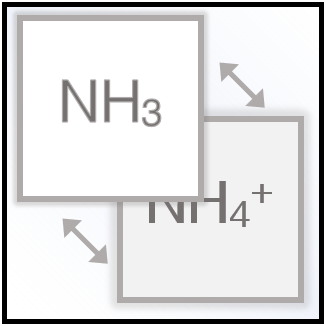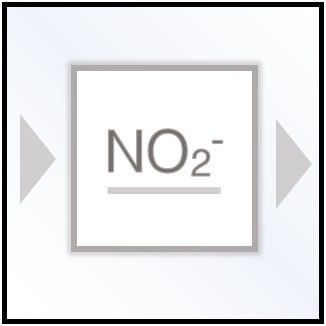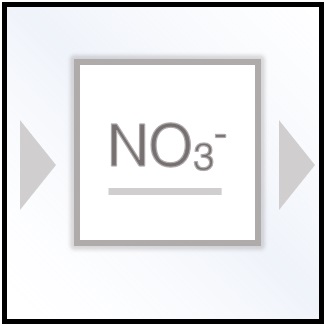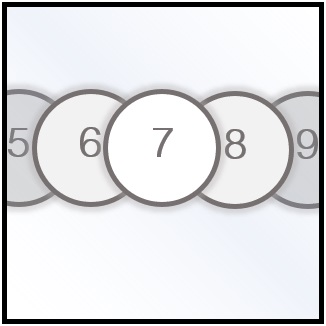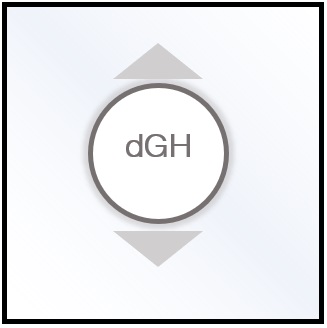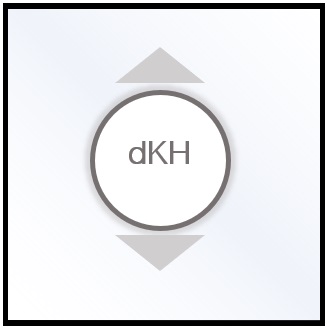Buffering capacity, alkalinity and carbonate hardness, what do they mean?
Carbonate hardness is NOT the same thing as GH or pH, although there is a relationship between these three parameters. Carbonate hardness is the buffering capacity of water, or simply put, the capacity of water to maintain a stable pH (how acidic or basic). The carbonate hardness of water is determined by the levels of carbonates (CO3) and bicarbonates (HCO3) present within the water. The higher the levels, the less the waters pH will fluctuate when acids or bases are added. The lower the levels, the more pH will swing in response to acids. KH is not a permanent force, and will be depleted over time by acids, as well as potentially being taken away by biological functions.
KH can be seen as a ‘spring’ on pH. The bigger the spring, the less acids will be able to push pH down and the less pH will fluctuate.
The term KH stands for ‘Karbonate Hardness’, which is German for Carbonate hardness. Some People will refer to KH as CH, but KH is more widely used worldwide.
Carbonate hardness is quite often also denoted by other terms such as Alkalinity, Buffering power/capacity, Carbonate Strength, Temporary Hardness, etc…
These terms may not always mean the same thing when it comes to chemistry, but within the aquarium hobby, they are generally used interchangeably.
Levels of carbonate hardness.
KH or carbonate hardness is usually measured in two units (similar to GH) Degrees of Carbonate Hardness (dKH) or as a measurement of Calcium Carbonate (CaCO3). The most popular measurement, and the one we will be using is degrees of hardness or dKH.
0 dKH
No carbonate hardness. Water likely acidic. pH likely to fluctuate heavily. Not recommended for keeping any fish.
3 - 6 dKH
Low KH. Can be beneficial for very softwater species like Discus and some Shrimps. Also beneficial for some plants.
6 - 12 dKH
Moderate KH. Ideal for most tropical fish that prefer close to neutral pH. Beneficial for most pond fish. pH fluctuations likely low.
12 - 18 dKH
Moderatly high KH. Ideal for fish which prefer more basic (alkaline) water such as Malawi Cichlids. pH very likely to be above 7.
18+ dKH
High KH. Not recommended to keep freshwater fish.
Why is my KH level important?
As previously mentioned, KH plays an important role in how much your pH fluctuates. This is important for a few reasons.
Old Tank Syndrome. In established aquariums that have been running for a while, and especially in aquariums where the water changes have either not been done at all or not done frequently, the KH will drop. This is because KH will be depleted both by filter bacteria and by acids. When KH gets too low, pH will swing substantially and overall, the aquarium may become acidic. Acidic water may be beneficial for some species of fish/plants, but if left unchecked it can lead to filter bacteria dying off. It also makes it very dangerous to add new fish, as the difference in pH (and possibly GH) can be too big to acclimatise.
Carbon dioxide and plants/algae. CO2 is an acidic compound when dissolved in water. All fish, inverts, plants, aerobic filter bacteria and algae produce CO2 as a product of respiration. There are only a number of ways CO2 can leave the water, whether it be by photosynthesis by plants and algae, or by gaseous exchange. The main problem is that when KH is too low, the CO2 levels will fluctuate the pH of water, especially at night when photosynthesis stops. This pH swing throughout the day and night can be stressful, or even lethal to fish. This is an important lesson to be learned for those who inject CO2 into their aquariums for plant growth.
Adjusting pH. Reaching the right level of KH is vital for those wanting to adjust their pH. It is possible to adjust pH without adjusting KH, for example by adding more acids, but in order to maintain a more stable and precise pH, it’s important to get the correct level of KH buffering.
It’s a common myth that plants only respire (take in oxygen and release carbon dioxide) at night once they’ve stopped photosynthesising. This is totally wrong! Plants and algae respire constantly, otherwise they would be dead. The myth comes from the misunderstanding of net oxygen produced by plants.
When a plant/algae is photosynthesising they are producing oxygen and reducing carbon dioxide leading to a increased level of oxygen, however they are also taking in oxygen in order to respire. The difference is that overall, there is a positive net amount of oxygen produced. This is why oxygen levels with the water will increase through the light period (and potentially shortly afterwards, depending the leaf structure) and then decrease over the period with no light.
Can I adjust the KH of my water?
Reaching the right level of KH can be done in two ways, lowering your value, or raising it. It's also important to maintain a stable KH.
↑ ↓ Use buffers & regulators
As mentioned in the pH guide, there are certain types of buffers than can raise or lower your pH by adjusting your KH. Acid KH buffers will convert the KH buffering compounds and may turn these compounds into a carbon source for plants.
Alkaline buffers will add these compounds to your water. There are also several specific buffers to try to replicate certain areas or for certain fish. Remember, if your aiming to change your KH as well as pH, you may want to avoid phosphate based regulators and use KH buffers instead.
↓ Tannins & other humic acids
Botanicals will release tannins and other organic acids (humic acids) which will not only lower pH, but will also lower KH as these acids decrease the buffering capacity over time. It’s worth noting that this method is not very precise or even guaranteed on water with high KH
↑ Coral stone
As mentioned in the pH and GH guides, coral stone can also be used to raise KH. Coral stone and other limestones may release calcium carbonate and other buffers. They will also raise GH, so make sure to research and test your GH to see if you want to raise this as well.
↓ Use RO
The easiest way to lower your KH value is to either dilute high KH water or to use all RO. Whenever using just RO you must be prepared to add back in the essential nutrients needed by livestock and plants.
There are Buffers and salts which you can add to RO to replicate a range of different ecosystems. Keep in mind, you need to add some carbonate hardness (KH) as well as general hardness (GH).
